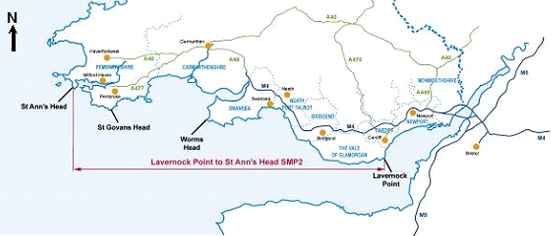Shoreline Management Plan
Shoreline Management Plan (SMP) is a non-statutory, policy document for coastal defence management planning that advises on how the coastline should change in the long term. It is developed in partnership by local authorities, regulators and other stakeholders.
It enables planners and regulators to plan for and manage the way that the coast will change. This could be by maintaining or improving defences, by enabling the natural processes to play a greater role, creating new natural habitat or by helping areas that are at risk of flooding at some point in the future to cope with and limit the impact of flooding events.

- Identifying risks to the developed, historic and natural environments as the coast changes
- Policy framework to manage the risks in a sustainable manner
- Large-scale assessment of the coastline - identifying the natural forces sculpting the shoreline and predicting, as far as possible, how the coast will change over time with erosion, sea level rise and climate change (in three 'epochs' of 20, 50 and 100 years time)
An SMP only sets out policy for coastal defence management. It doesn't set policy for any other ways of managing flood risk (such as land drainage) or for the management of coastal resources.
The coastline is divided up into sections called 'Policy Units'. For each section, the SMP will recommend one of the following four policy options:
- No active intervention - no construction of new defences or maintenance or upgrade of existing defences
- Hold the existing line of defence - maintenance of existing defences in their current position, with upgrades to counter climate change and sea level rise
- Managed realignment - landward retreat of defences, giving up some land to the sea to form a more sustainable defence in the long-term
- Advance the existing line of defence - seawards movement of the defences
Local Authorities and regulators with responsibilities for managing the shoreline will be asked to adopt the SMP and to make their decisions based on the policy options in the plan. This will help ensure that, for example, future developments are not put at higher risk of flood or coastal erosion.